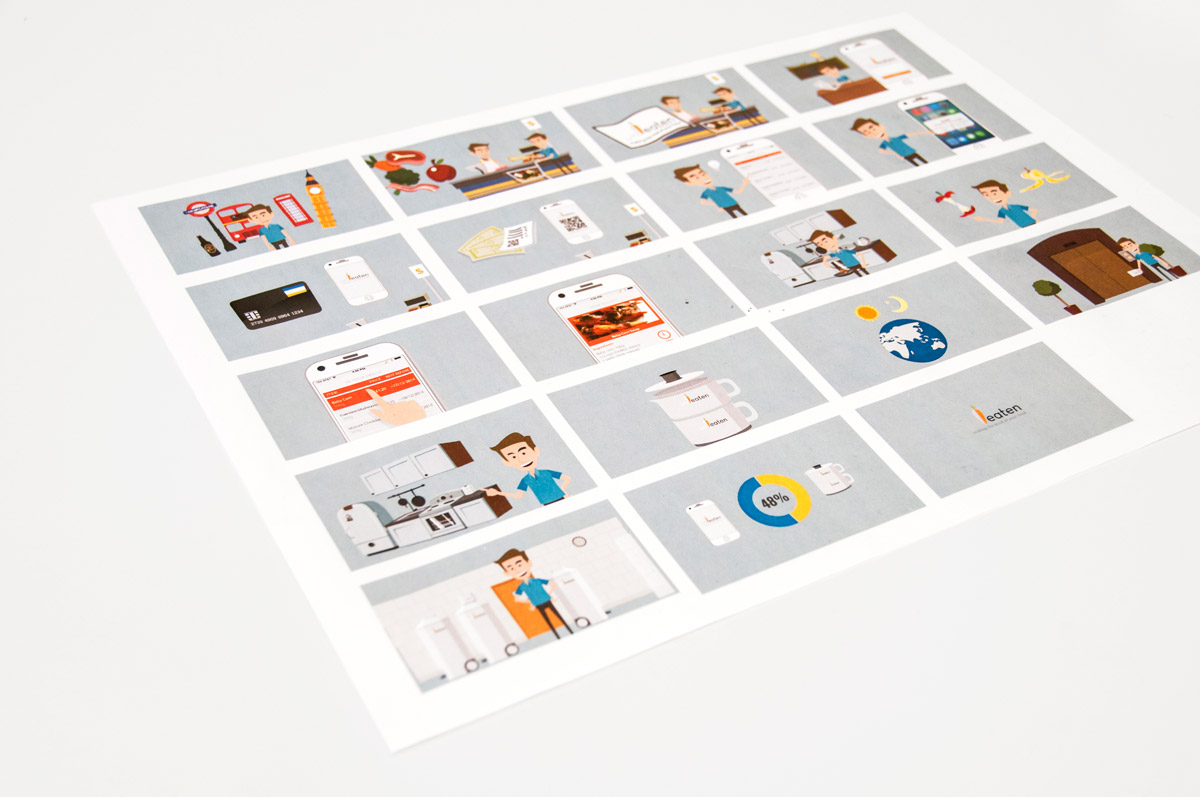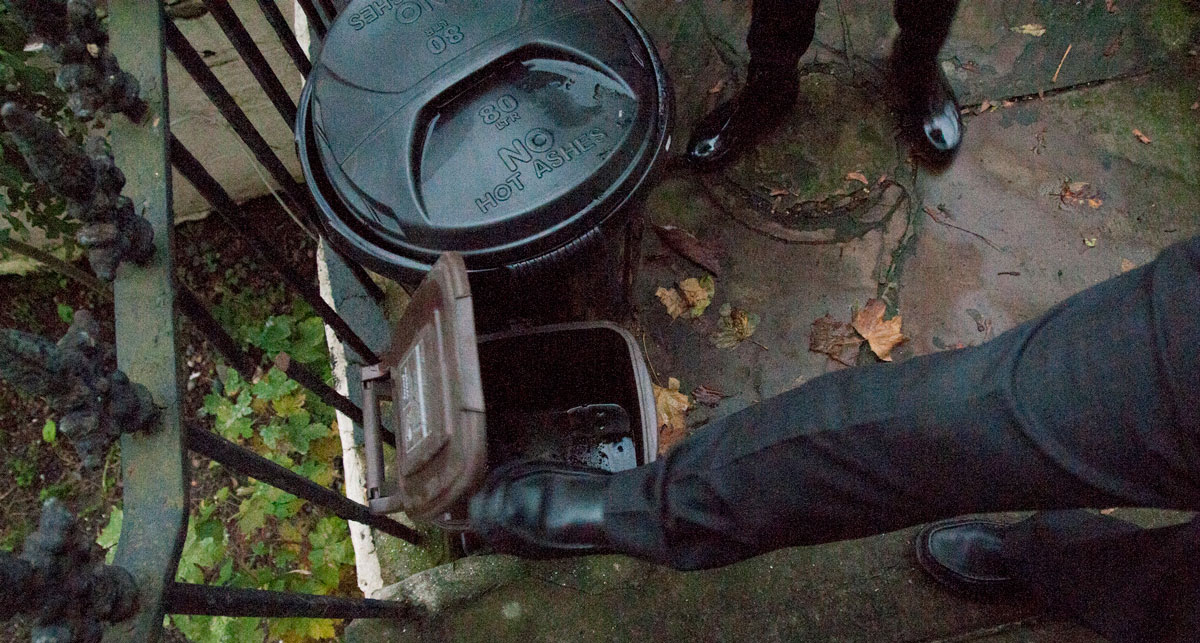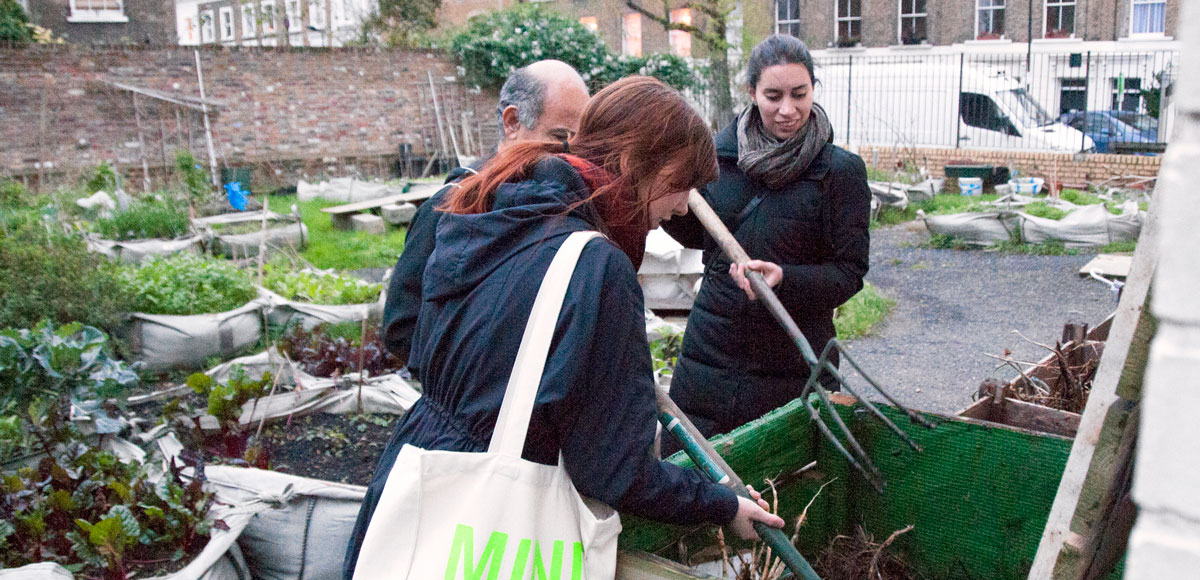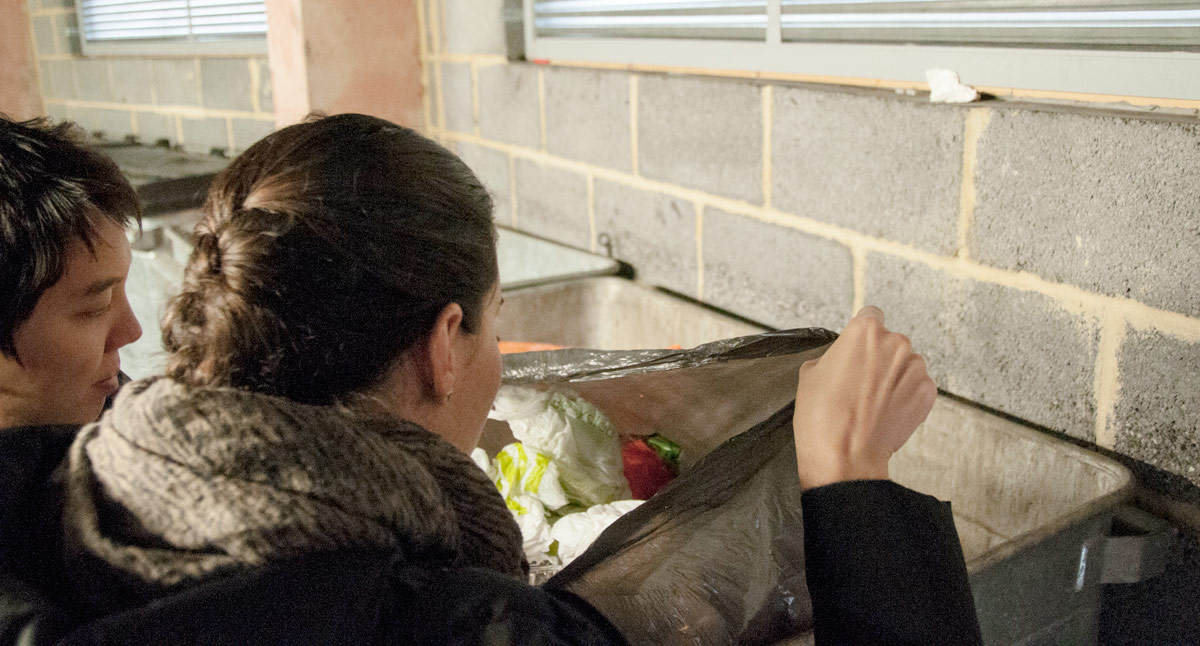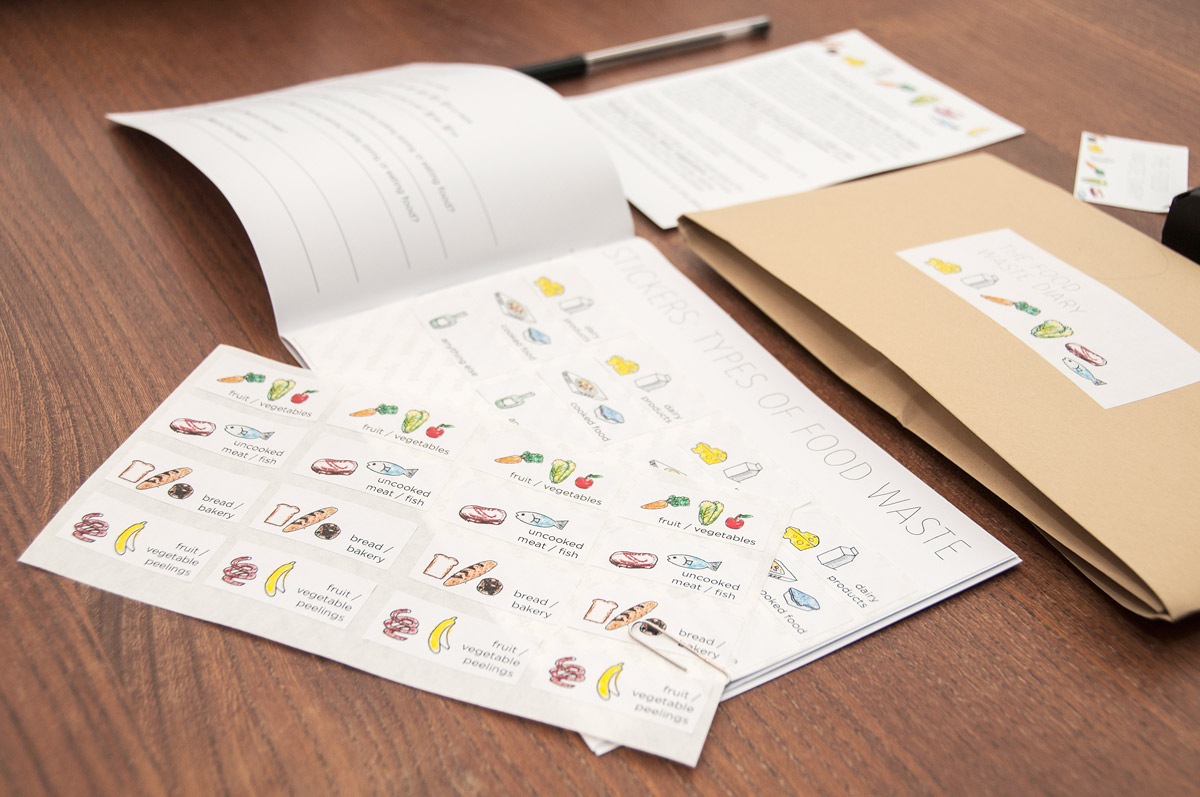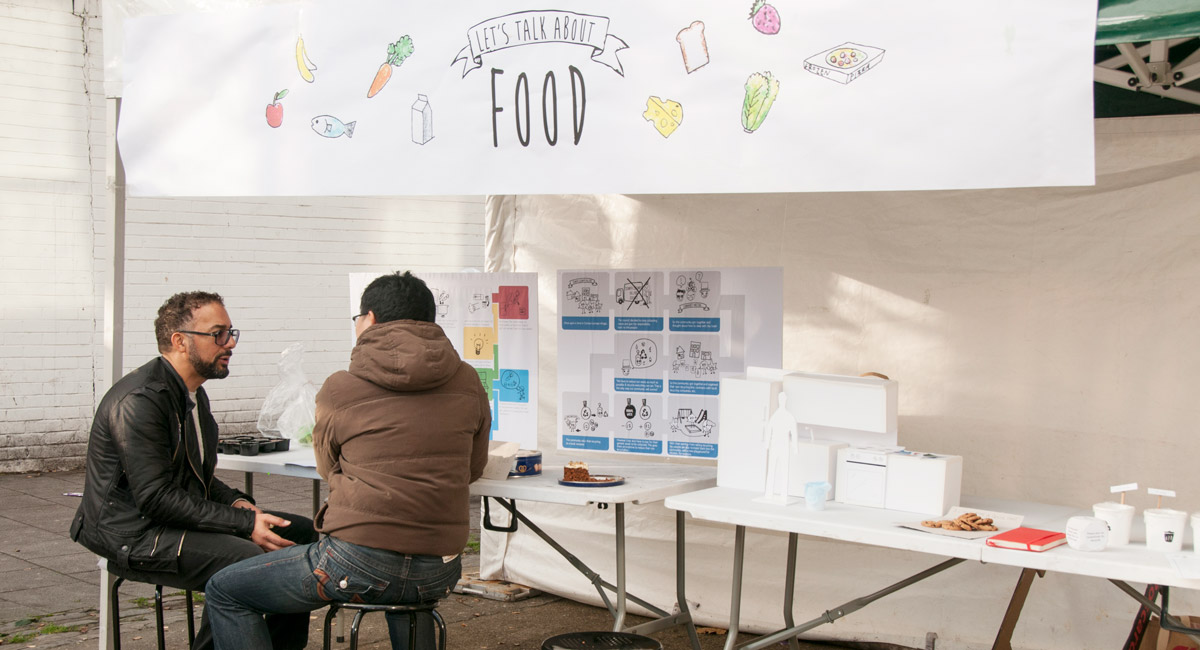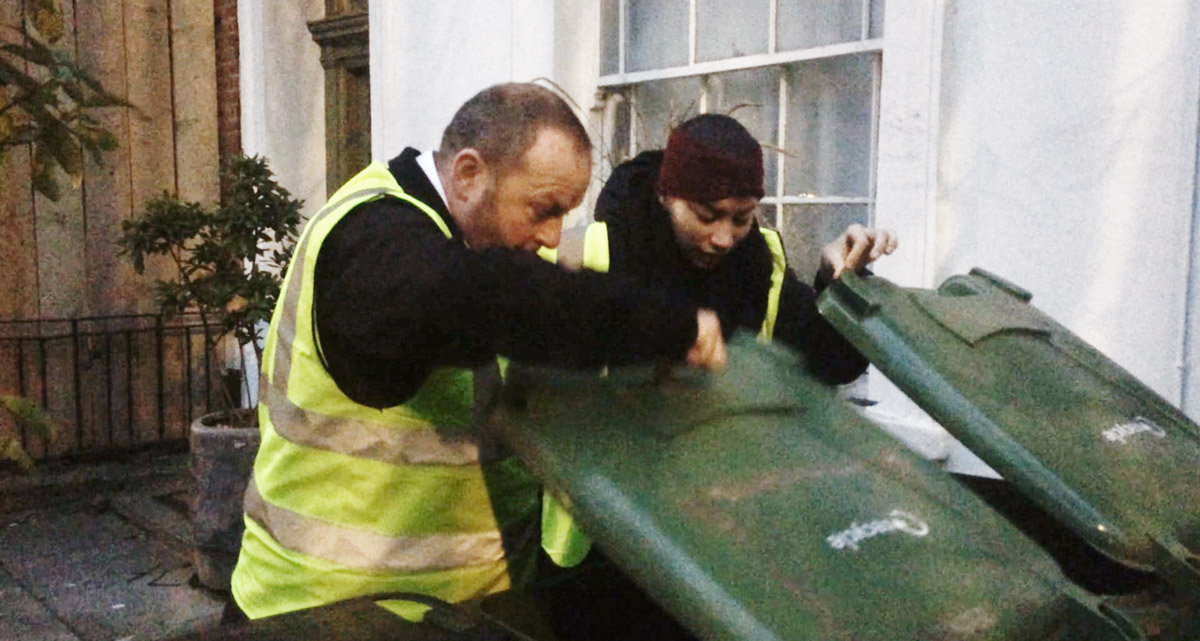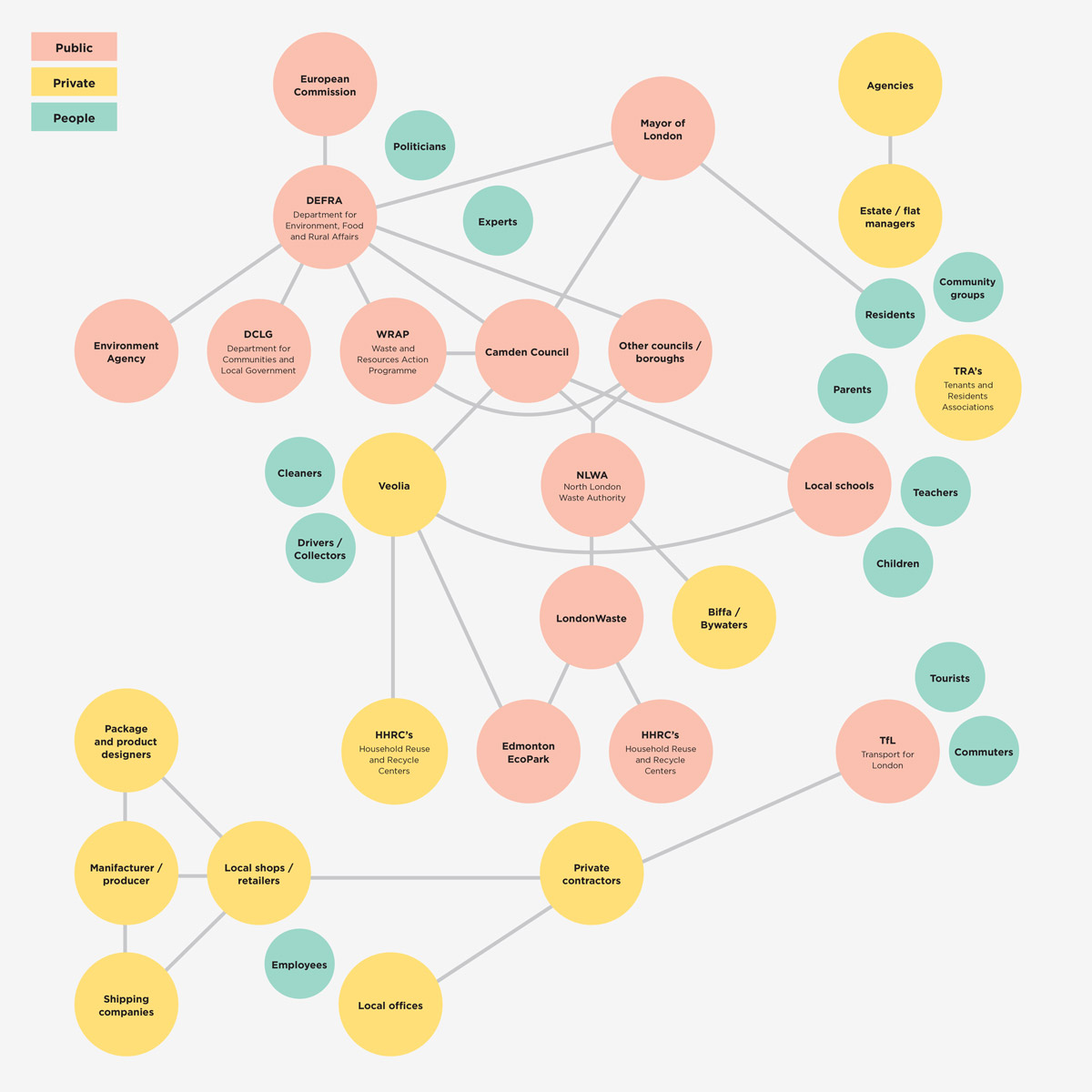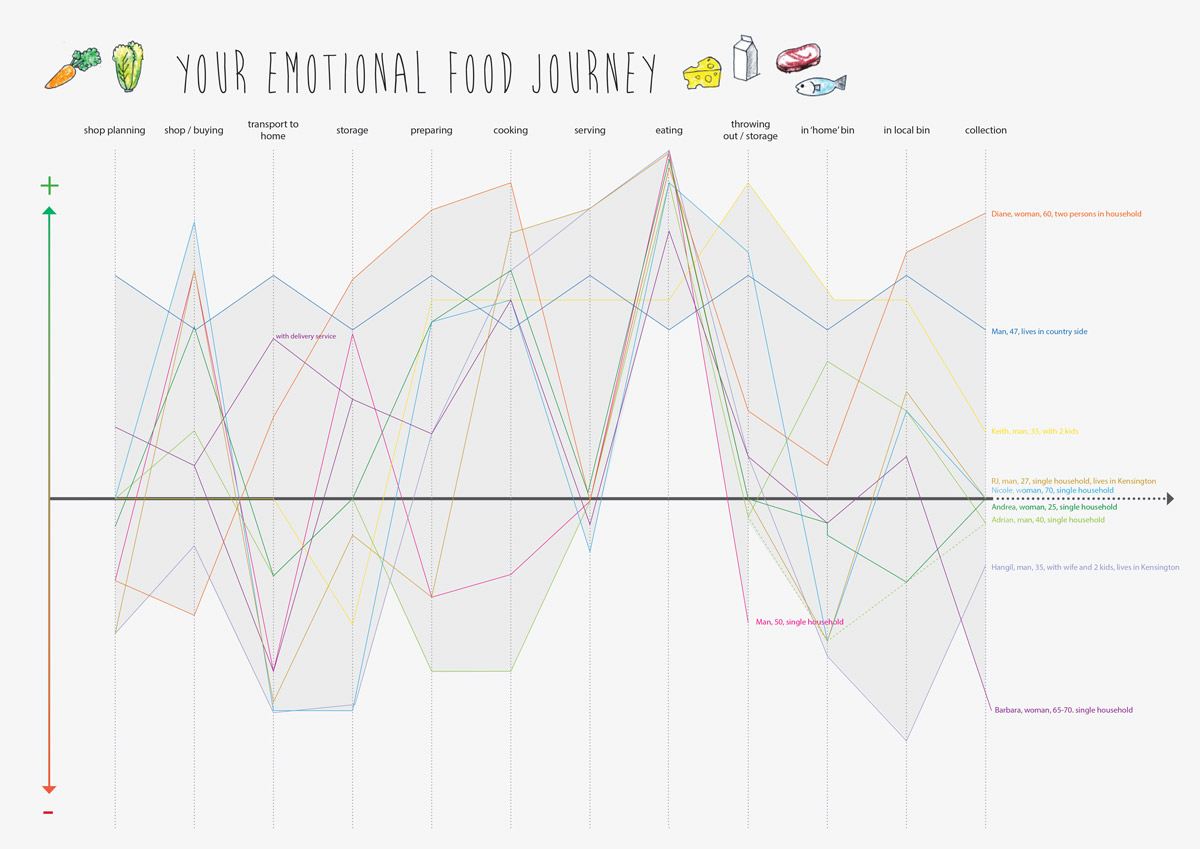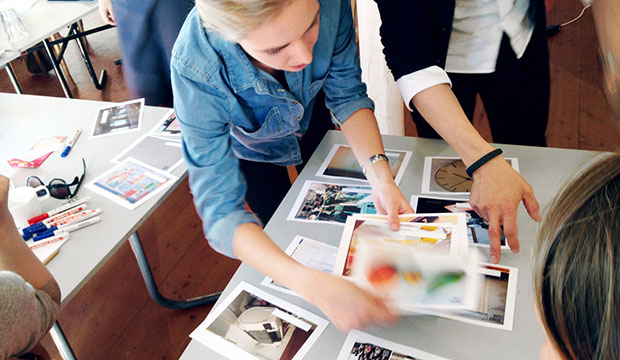The design
One of the key insights we gained from our research was that people are unaware of the monetary value of the food they waste, i.e. they don’t know how much money they literally throw in the bin. Uneaten enables this type of self-monitoring, and also lets you track your recycling rate. One of the key touchpoints we identified in the journey was storing and emptying the food recycling bin. Thus we also proposed a redesigned bin and container that makes storing food waste feel more hygienic.
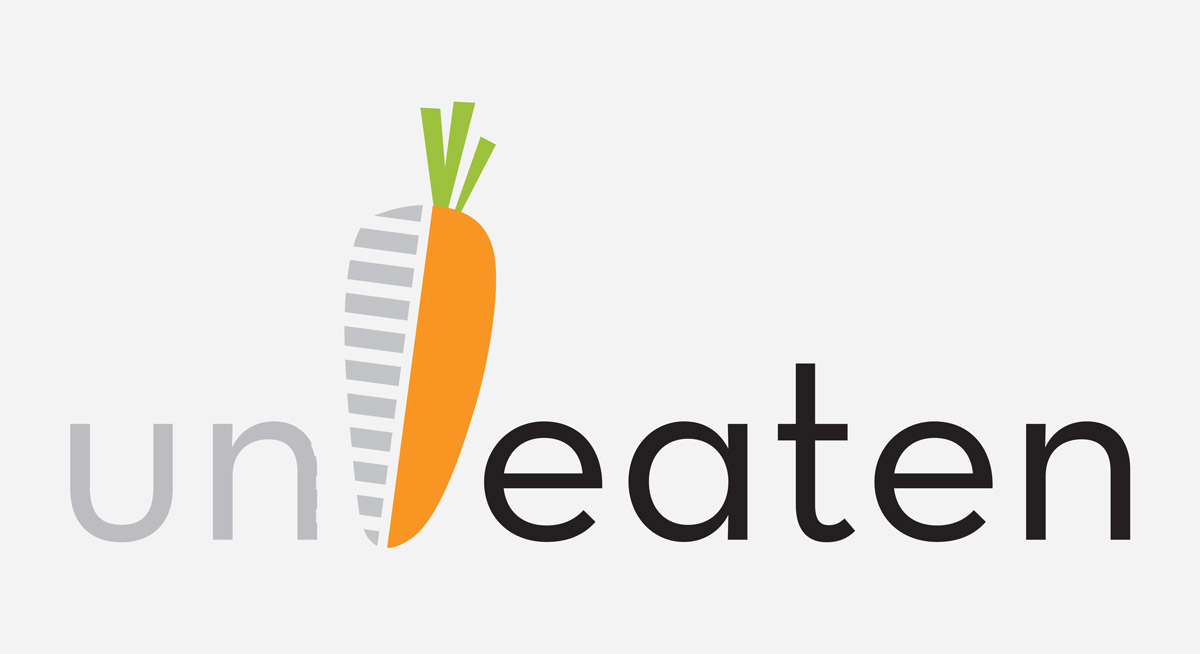
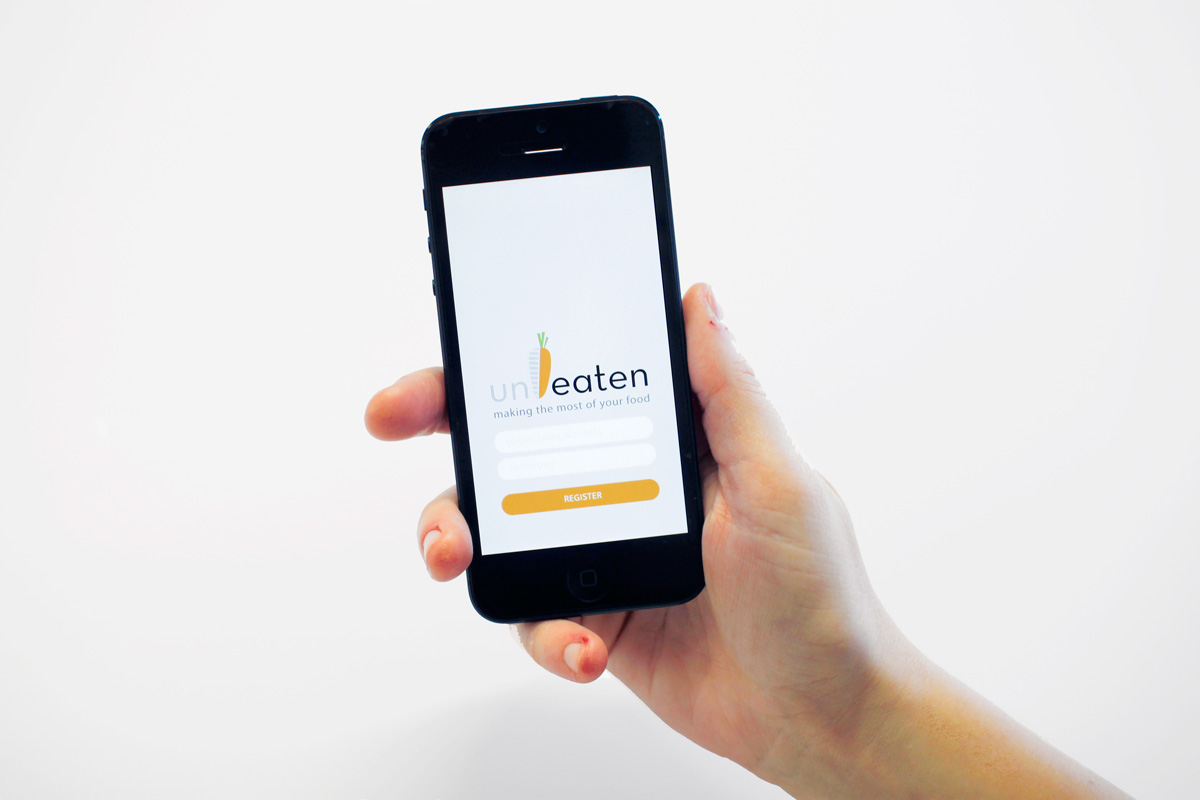
Uneaten takes the form of an app because it is convenient to have information about what is in your fridge and cupborard, whenever you decide to go food shopping.
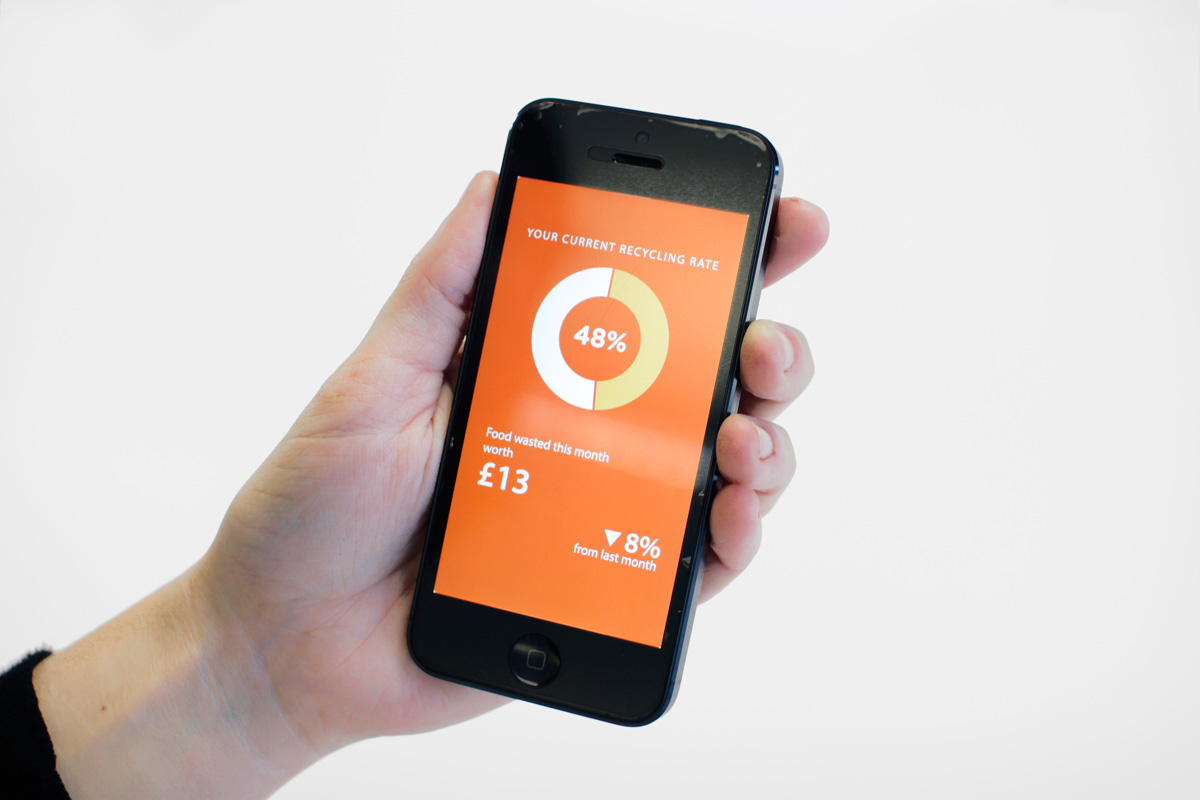
With the new food caddy, you can self-monitor your recycling rate, and how much money you waste on uneaten food.
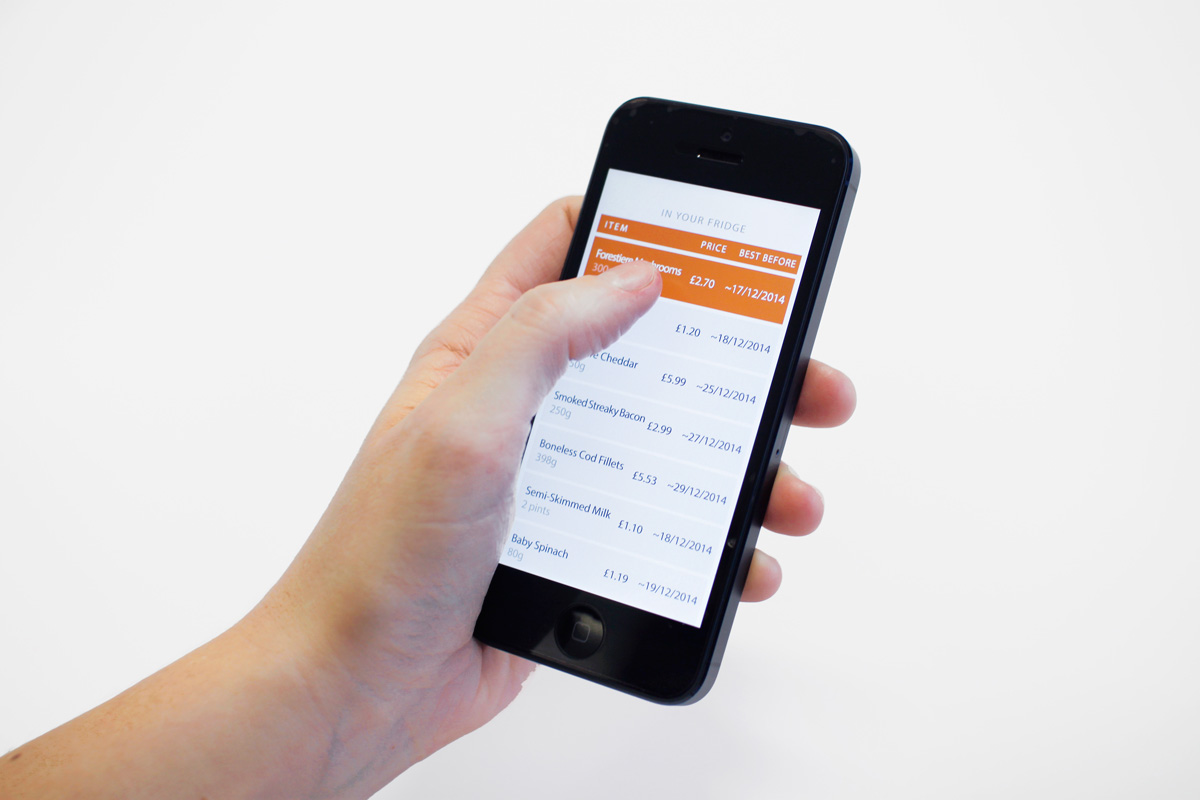
Uneaten stores the details of the food in your cupboards and fridge at home, including expiry dates. Once you've eaten an item, you simply swipe to delete.
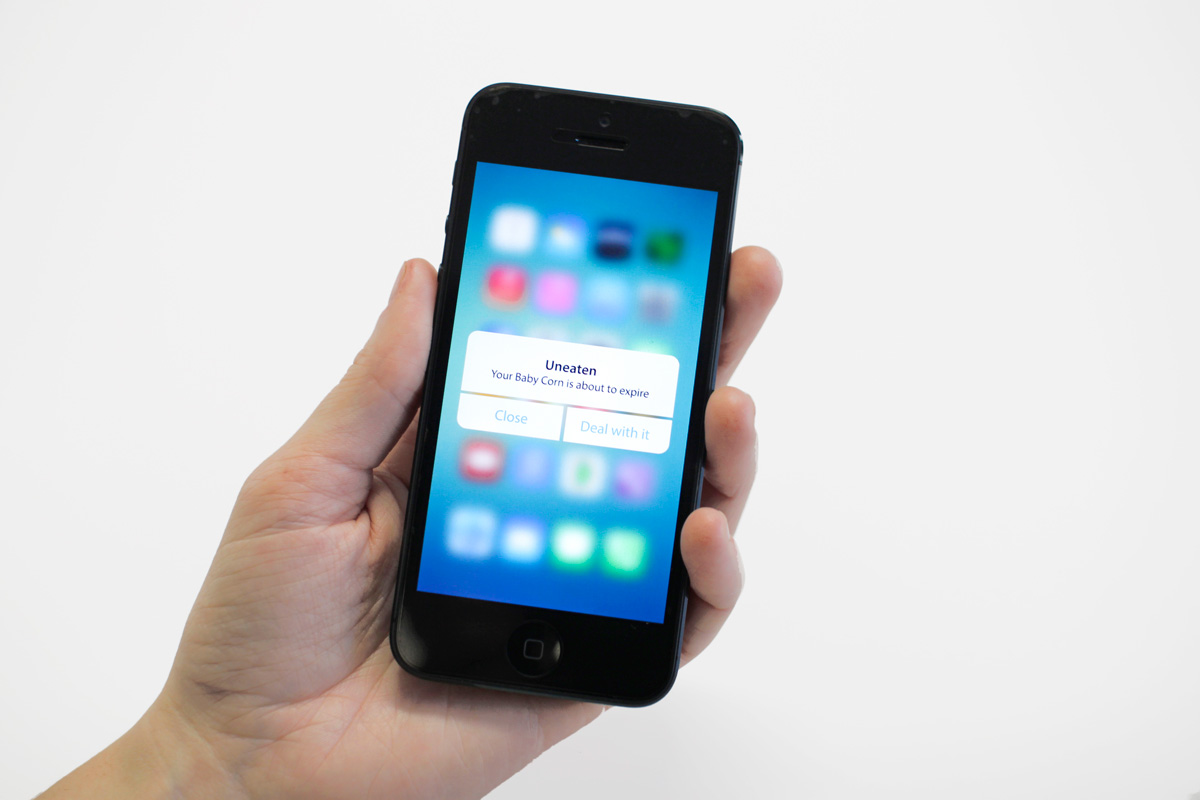
When an item in your fridge or cupboard is about to expire, Uneaten sends you a reminder. You can then browse recipes containing that item, find friends to cook with, or give it away.

The redesigned food caddy comes in several sizes depending on need and household size, and when adding more food waste to the caddy, you avoid being confronted with the already decomposing food waste.
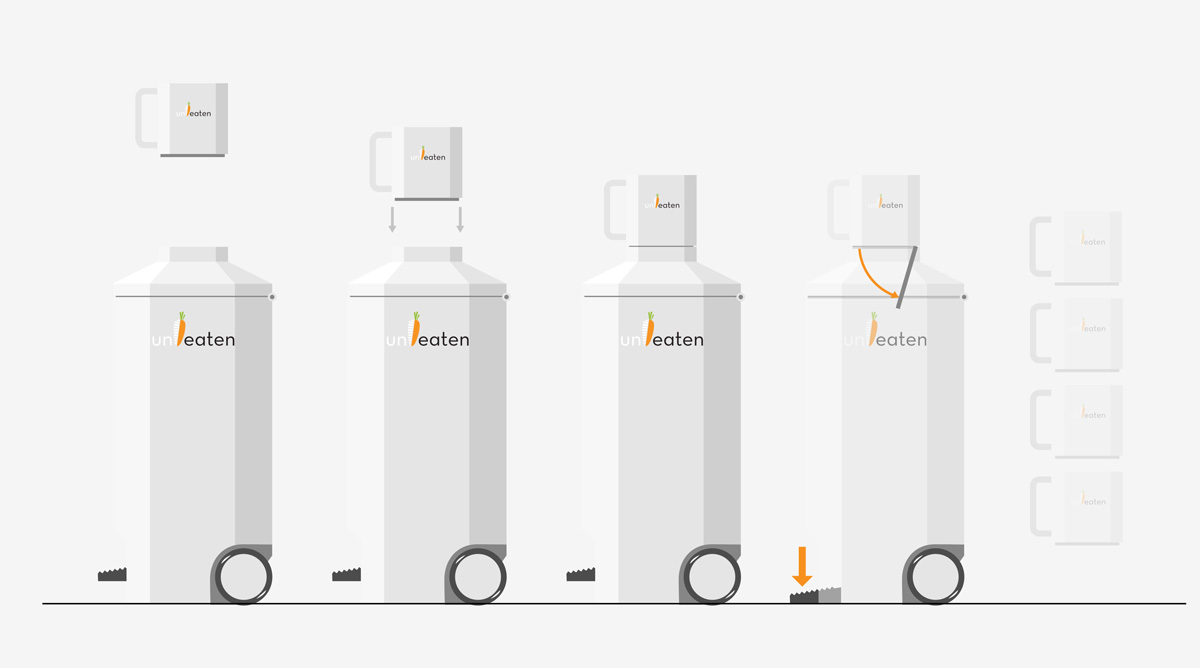
A pain point of today's food recycling is emptying the smelly content of the smelly food caddy into the smelly container. With the new caddy, there is no need to be confronted with your decomposing food waste.
